Finding girl power among the 'boy toys'
- Published
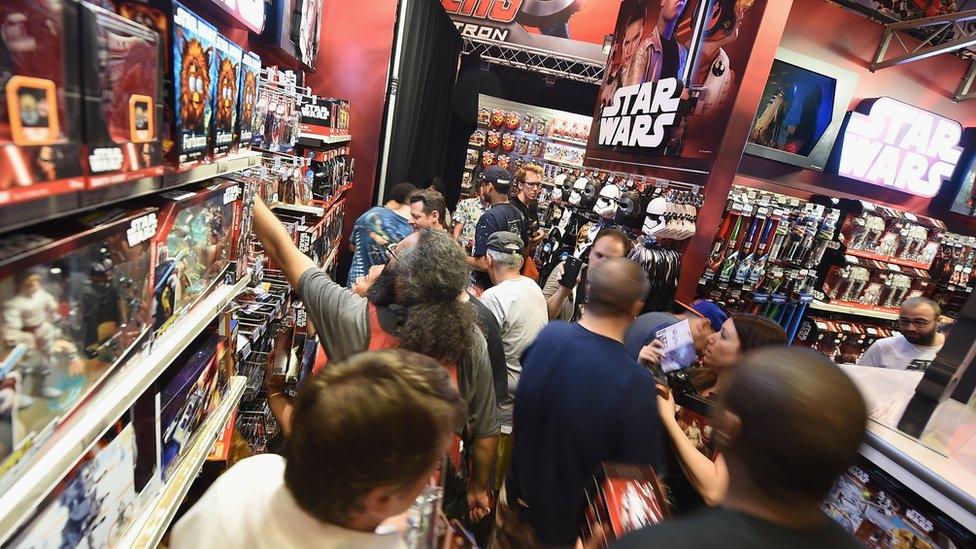
Female action heroes are reaching new heights in blockbusters like Star Wars: The Force Awakens, but there is one place where their power has hit a wall - the toy aisle.
This release of Star Wars: The Force Awakens will be a massive event, taking over cinemas and toy shelves around the world. But unlike the previous times viewers were blasted to a galaxy far far away, there will be probably as many girl Star Wars fans as boys.
After all, Princess Leia has ditched her bikini slave gear for a Spartan uniform. And also she's General Leia, not anyone's princess.
But in the toy aisle the (male-dominated) empire has mostly certainly struck back.
On shelves devoted to Star Wars merchandise, the film's presumed hero, Rey (actress Daisy Ridley), peers from back of the cardboard marquee housing the scores of toys for display. Rows and rows of storm troopers, aliens of all stripes and menacing helmeted figures fill the shelves. A few Rey figures dangle from hooks, but the film's other female characters aren't as lucky. General Leia, Captain Phasma and Maz Kanata have yet to make an appearance here.

Star Wars fans have high hopes for new female hero Rey (Daisy Ridley)
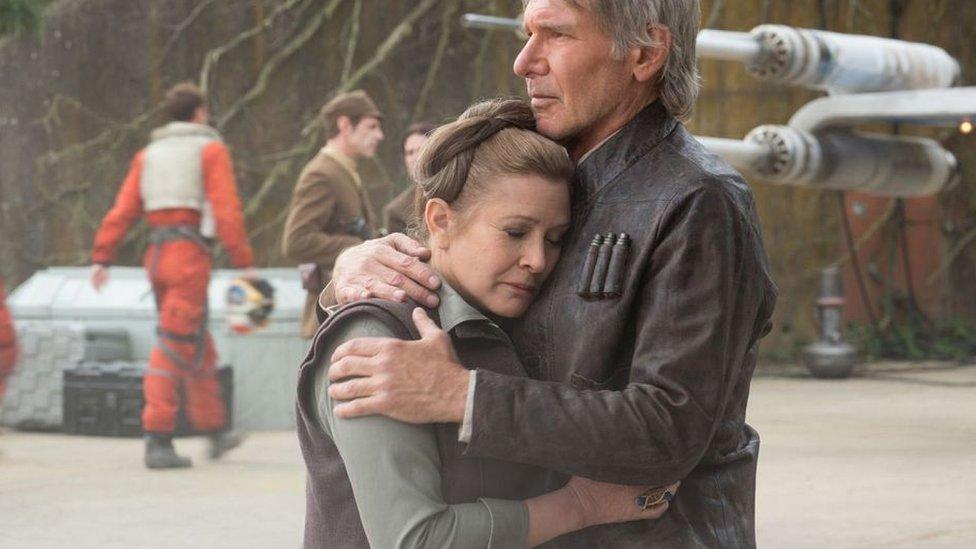
Princess Leia (Carrie Fisher) is promoted to a military general in the new film
Some Star War bloggers, external have been joking that BB8 - a seemingly asexual robot - has been made a "girl" to help the cause of gender equality.
And it's not just Star Wars. Marvel's Avengers have female trouble as well.
Super spy Black Widow barely made any of the merchandise for one of 2015's biggest movies. She was even cut out of the cover of the movie's Blu-ray release.
Wonder Woman - the world's most prominent female hero - is also not immune. She once disappeared from a set of Justice League sheets, ironically replaced by notorious bed wetter Aquaman.
Anyone searching for female action figures often find themselves out of luck, even as films have more female characters.
So why can't these imposing screen idols be little plastic ones?
"It's a trickledown effect. It is going take a while for this kind of thing to invade the culture," say Deborah Best, a psychologist who studies gender roles and young children.

Best, a professor at Wake Forest University in North Carolina, applauds filmmakers for telling stories that empower female characters, but believes the merchandisers, with tighter bottom lines to manage, might not be as bold.
Hasbro, Star Wars' chief toymaker, says it is committed to female characters like Rey and promises the release of more action figures following the debut of Star Wars: The Force Awakens.
"We know that Star Wars is a property that is universally loved and that is why we always have, and will continue to offer characters that appeal to fans of every age and gender," said Jerry Perez, Hasbro's senior vice president for global brand strategy and marketing
Ed Sanchez has been a Star War collector for more than 15 years and has about 9,000 items in his Frederick, Maryland, basement.
"Sorry to say, the companies know it's a business and little girls don't buy Star Wars toys - or at least they didn't," Sanchez said.
"In the 1980s, you'd walk into the toy store and you'd see the Leias in her Bespin gown - rows and rows of them. They couldn't get rid of them."
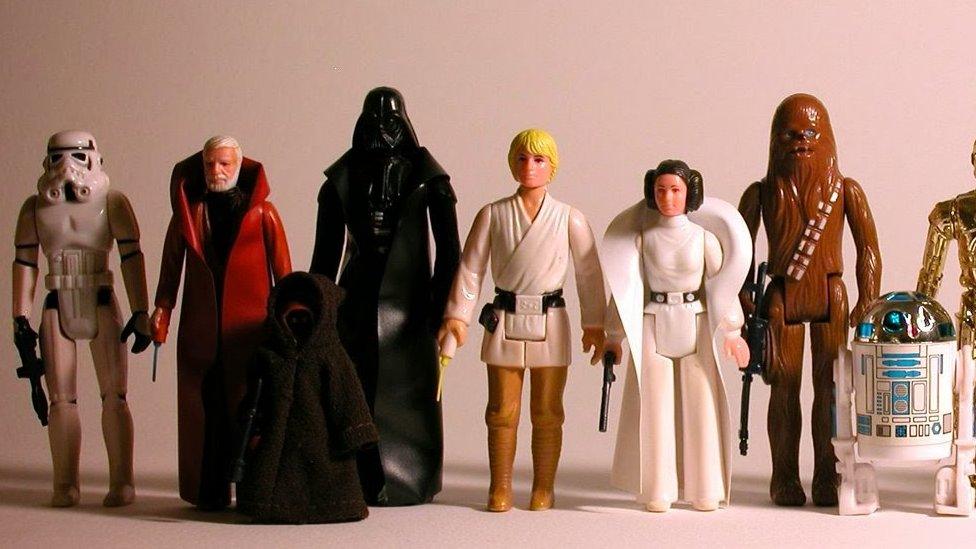
Princess Leia (third from right) was not a top seller among the original Star Wars toys
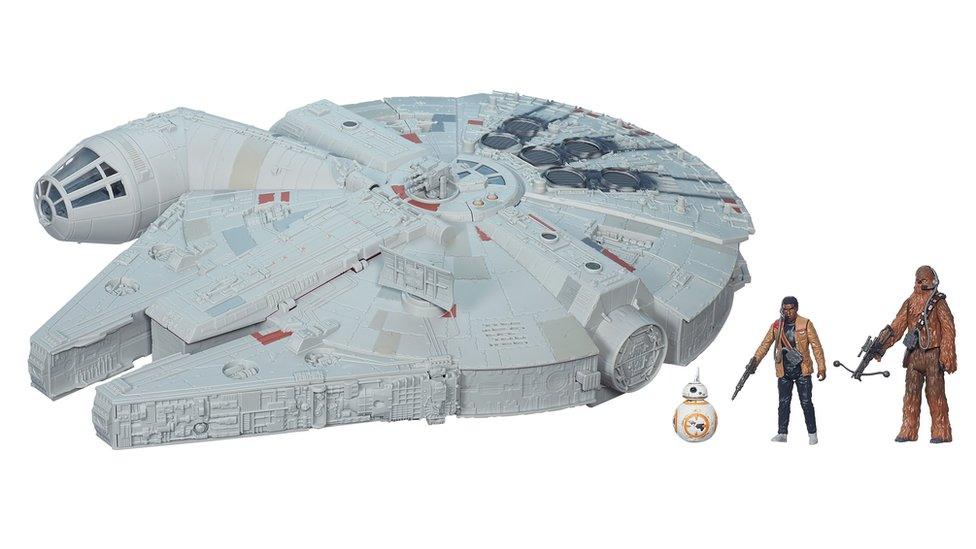
Female characters are often left out of packaged sets of toys
Best, the psychologist, said things may be getting worse. Toy sections in stores are becoming more rigidly colour-coded - pink for girls and blue for boys - and it may have more to do with money than gender politics.
"It's a marketing thing. They can sell more if they sell two - one set one for the girl in the family and one set for the boy in the family," Best said.
Lara Werwa's daughter, Alana, would just be happy to find her favourite heroes in stores, regardless of whether it's in the boy or girl aisle.
After the Avengers movie hit cinemas in April, she asked: "Where's Widow, Mommy?"

Black Widow (Scarlett Johansson) is a major presence in the Avengers movies, but not in merchandise
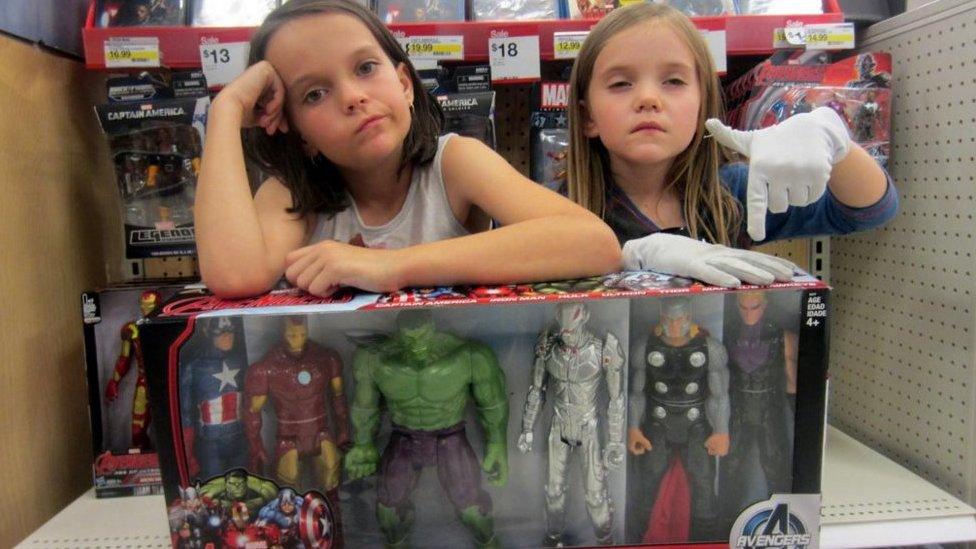
John Marcotte runs a blog Heroic Girls; here Marcotte's daughters try in vain to find female Avenger Black Widow
"She is a strong little girl who loves Black Widow and Gamorra as much as she loves Barbies and Monster High dolls," said Werwa, who lives in Florida with eight-year-old Alana. "And she is crushed that there is no representation in the toy aisle."
To push back, social media campaigns (#wheresrey, #wheresnatasha) have been brewing that combine the question "where is?" with characters like Star Wars' Rey and the Avengers' Black Widow, aka Natasha Romanova. Toy makers are being increasingly asked why popular female characters aren't represented in their toys and T-shirts.
Celebrities have weighed in as well. Just this month, Carrie Fisher, Leia herself, retweeted fan complaints about the current dearth of Leia merchandise.
And Mark Ruffalo, who plays the Hulk in Marvel's Avengers film, took to Twitter in April to nudge his company on more Black Widow toys.
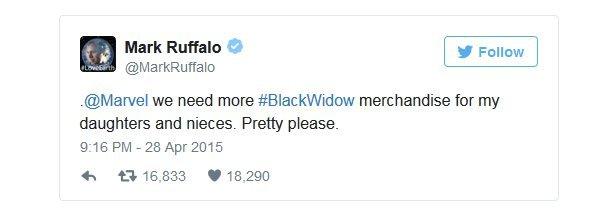
While you can still find examples of female characters being snubbed on the Internet, the companies are taking these female fans more seriously.
John Marcotte of California runs the Heroic Girls blog, inspired by his daughters' trips to the local Target toy section.
The blog has been posting news about these merchandise-challenged female characters for a few years now, but Marcotte says he's seeing progress since he started the blog.
Disney, Star Wars' corporate overlord, is releasing female-focused Star Wars products such as shirts and bags - a first for the 30-year old movie empire.
Now Star Wars may have the opposite problem of those unsold 1980s Leia dolls. Customers can't get enough of women's Star Wars gear: what once was nonexistent or unwanted is now sold out.